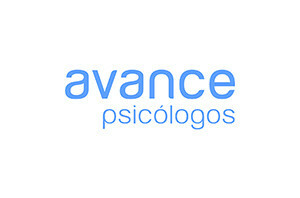California Verbal Learning Test: characteristics and uses
Psychological evaluation encompasses a wide variety of tests and tests that evaluate different traits of the person, especially personality and intelligence.
In this article we will know the California Verbal Learning Test, a test that evaluates verbal memory and learning ability, developed by Delis, Kramer, Kaplan and Ober in 1987.
This test consists of a brief technique for evaluating multiple strategies and processes involved in learning and verbal memory. Besides, contributes to the diagnosis and treatment of memory disorders secondary to neurological, psychiatric and learning disorders.
- Related article: "Types of psychological tests: their functions and characteristics"
California Verbal Learning Test: general characteristics
The California Verbal Learning Test or California Verbal Learning Test (CVLT) (Delis, Kramer, Kaplan & Ober, 1987) is a neuropsychological test used to assess verbal memory and learning ability of a person. It was validated by Dimey, Matallana and Montañez in 1996.
Specifically, it also evaluates the following aspects: memory, recognition, the effects of the serial position (how it affects the order of the presentation of the words in your memory), the rate of learning, the interference and the strategies of learning.
Its application age ranges from 5 years to 16 years and 11 months, and its scope of application is people with neurological, psychiatric or learning disorders.
The California Verbal Learning Test is guided by a data interpretation methodology based on memory models called "multistore". In addition, it is a test that presents an ecological aspect by presenting the lists to be memorized as "shopping lists", as we will see later.
Test Administration
Administration of the California Verbal Learning Test lasts about 35 minutes (although this is variable), and is administered on an individual basis.
First the examiner reads a shopping list aloud, called "Monday's shopping list". The list contains 16 common words, each of which belongs to one of 4 categories; in this way there are 4 herbs, 4 fruits, etc.
The subject is then asked remember as many words as possible. Also included below are distracting tasks to assess interference, as well as other lists. Let's see it in detail:
Test components
First of all, the examiner records the number of words the subject remembers, after performing several trials. It also records if the subject is using the information from each category, that is, if the subject has grouped the words by categories or not.
The examiner then reads a second list, "the Tuesday shopping list", and then checks whether the subject is able to remember and maintain the items on each list separately, or if he confuses or mixes the two ready.
Finally, the examiner offers 20 minutes of time to perform other tasks (“distraction tasks”), and then asks the subject again for the 16 words from the first list. So, interference is also evaluated.
In addition to the commented free recall tests, the California Verbal Learning Test includes two recall tests. with semantic cues, which are presented immediately after short-term and long-term free recall tests, respectively.
- You may be interested in: "Types of memory: how does the human brain store memories?"
Test results
In the application of the California Verbal Learning Test, it has been observed how in general women tend to group more by category than men. On the other hand, patients with different types of brain damage or disorders have shown certain patterns of performance.
For example, patients with Alzheimer's disease they tend to show more difficulties when it comes to grouping by categories, and they almost never do so (for example, they say “oranges, apples, grapes and fish”). Parkinson's disease patients, on the other hand, tend to make repetition errors (for example, they say “apples, oranges, bananas, oranges”).
Spanish version of the California Verbal Learning Test: TAVEC
The Spanish adaptation of the CVLT is the Spain-Complutense Verbal Learning Test (TAVEC), prepared by María Jesús Benedet and María Ángeles Alejandre in 1998 (with its latest version in 2014). The TAVEC explores, like the California Verbal Learning Test, verbal memory and learning.
The TAVEC contains three lists of items that can be grouped into 4 categories to assess learning, interference, and recognition.
The test makes it possible to determine the "normality" of the subject, comparing it with a sample similar in age, sex and educational level. It also describes the way your memory system works (it is based on theories of the modularity of the mind). In addition, it determines the form and reason for the deviation, if it appears, and offers indicators of possible suspicions of dementia.
On a technical level, its administration lasts approximately 40 minutes (similar to the California Verbal Learning Test); It is also for individual application and the population to which it is directed is adolescents and adults with and without brain damage (from 16 years of age).
Bibliographic references:
- Delis, D.C., Kramer, J.H., Kaplan, E., and Ober, B.A. (1987) California Verbal Learning Test. Research Edition Manual. New York: Psychological Corporation.
- Buela-Casal, G.; Sierra, J.C. (1997). Psychological evaluation manual. Ed. XXI century. Madrid.
- Benedet, M. J. and Alexandre, M. TO. (2014). TAVEC. Verbal Learning Test Spain-Complutense. Madrid: TEA Editions.


